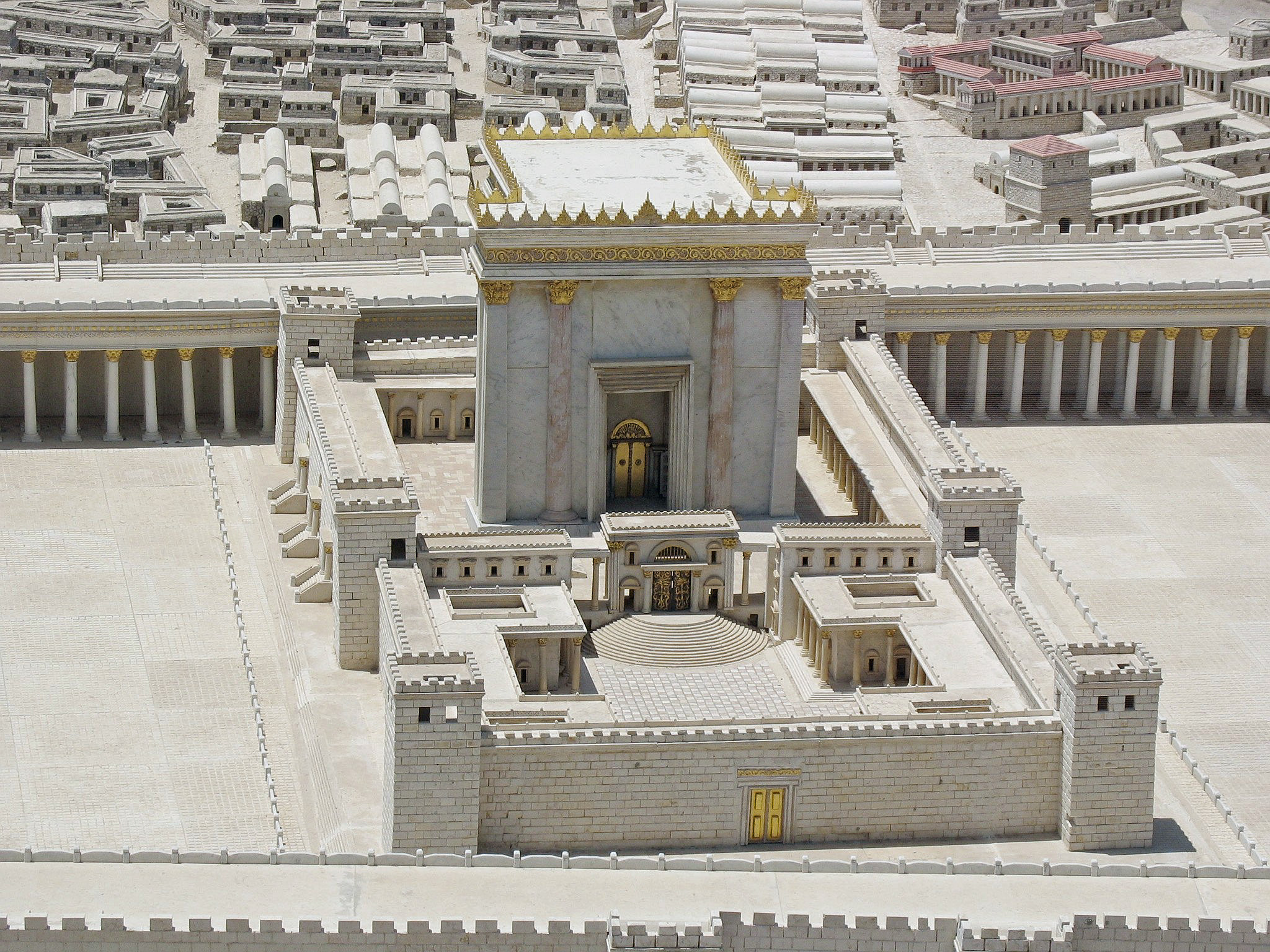The high priest’s robes
For 1000 years – until early in our common era – the temple was the central site of Jewish worship, and the twelve tribes of Israel were represented on the high priest’s garments when he served in the Holy Place.

The twelve tribes of Israel were represented on the high priest’s garments as he served in the Most Holy Place. The picture shows a model of the second temple during Herod’s time. Photo: Commons wikimedia
In the Holy Place stood the menorah (candlestick), the table of showbread and the altar of incense. It was here the priests came regularly to perform the different ceremonies. Behind the veil in the Most Holy Place stood the Ark of the Covenant, where the high priest alone was allowed to enter once a year on the Day of Atonement – Yom Kippur – clothed in a white linen garment. While serving in the Holy Place, the High Priest wore special clothing as described in Exodus 28: a breastplate, an ephod, robe, plaid tunic, turban, and belt. The ephod was made of artistically woven fabric using gold, dark blue, purple and crimson thread and fine woven linen. It had two onyx stones on the shoulder-pieces where the names of the sons of Israel were engraved, in order of birth.
The Twelve Tribes
The high priest would also wear a breastplate of the same material with settings of stones in four rows: in the first row a carnelian (tribe of Reuben), topaz (tribe of Simeon) and emerald (tribe of Levi). In the second row a turquoise (tribe of Judah), sapphire (tribe of Issachar) and diamond (the tribe of Zebulun). In the third row a jacinth (tribe of Dan), agate (tribe of Naphtali) and an amethyst (tribe of Gad) and in the fourth row a beryl (tribe of Asher), onyx (tribe of Joseph) and jasper (tribe of Benjamin). When the land was later divided, Joseph’s sons Ephraim and Manasseh replaced Joseph and Levi. The stones all bore the name of one of the twelve tribes, engraved as on a signet. The high priest would thus bear on his breast and on his heart the names of the sons of Israel as he entered the sanctuary “as a continual memorial before the Lord.”



